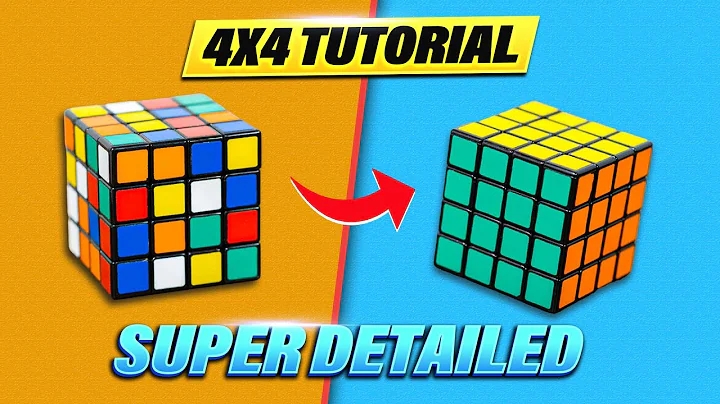Solving the 4×4 Rubik’s Cube, also known as the Rubik’s Revenge, is similar to solving the classic 3×3 cube but requires a few additional steps due to the increased complexity. Here’s a step-by-step guide to solving the 4×4 Rubik’s Cube:
Step 1: Solving the Centers
- Build the Center Pieces:
- Unlike the 3×3 cube, the 4×4 cube has center pieces that do not move relative to each other. Start by solving the center pieces of each face based on color.
- Treat the cube like a 3×3 at this stage. Align the center pieces correctly, matching the adjacent edge colors.
Step 2: Pairing the Edge Pieces
- Pair Similar Edges:
- Solve the edges by pairing similar pieces together based on color.
- Find two edge pieces with matching colors and align them next to each other.
- Use the following algorithm to pair and place the edges:
- [Rw, U, Rw’] (or its inverse [Lw’, U’, Lw]): This algorithm helps pair the edges without disturbing the solved centers.
Step 3: Creating the 3×3 Stage
- Reduce to a 3×3 Cube:
- Treat the cube as a 3×3 cube by reducing it to that size. This involves solving the remaining pieces as you would on a standard 3×3 cube.
- Start by solving the cross on one face and then the corners.
- Use familiar 3×3 algorithms and techniques to solve the cube up to the last layer.
Step 4: Solving the Parity Errors
- Identify Parity Errors:
- On the 4×4 cube, you might encounter parity errors where the cube appears to be unsolvable using standard 3×3 methods.
- Common parity errors include OLL parity and PLL parity, which affect the orientation and permutation of certain pieces.
- Fix Parity Errors:
- To fix parity errors, use specific algorithms designed to address these issues. For example:
- OLL Parity Algorithm: [r U2]2 (or its inverse [l’ U2]2) to fix orientation parity.
- PLL Parity Algorithm: [2U (2L 2R)2]*2 (or its inverse) to fix permutation parity.
Step 5: Final Adjustments
- Fine-Tune the Cube:
- After solving the cube using the above steps, perform any necessary final adjustments to ensure all pieces are correctly aligned and oriented.
- Practice finger tricks and cube rotations to improve speed and efficiency.
Tips:
- Practice Look-Ahead: Improve your look-ahead skills to anticipate and plan your moves efficiently, especially during the edge pairing stage.
- Learn Algorithms: Familiarize yourself with 4×4-specific algorithms for edge pairing and parity errors.
- Be Patient: Solving the 4×4 cube can be more challenging than the 3×3, so take your time and practice regularly to improve.
By following these steps and practicing consistently, you’ll be able to solve the 4×4 Rubik’s Cube confidently. Enjoy the challenge and happy cubing!
